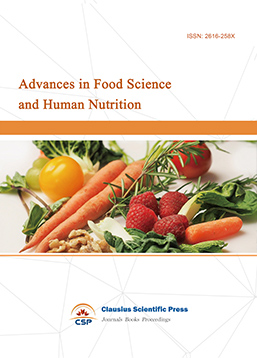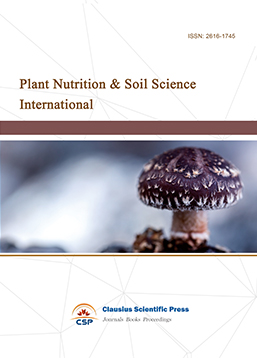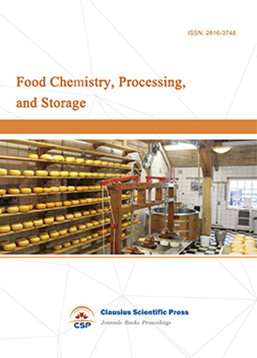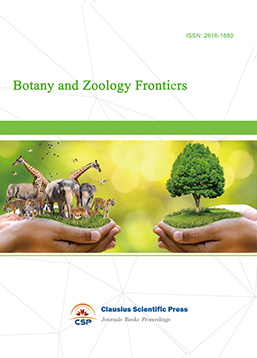Identification of Grapefruit Black Spot Based on Hyperspectral Imaging using Naïve-Bayes Classifier
DOI: 10.23977/hyde.2022.010101 | Downloads: 60 | Views: 3917
Author(s)
Sitan Ye 1, Haiyong Weng 2
Affiliation(s)
1 School of Engineering, Newcastle University, Newcastle, UK
2 College of Mechanical and Electrical Engineering, Fujian Agriculture and Forestry University, Fuzhou, China
Corresponding Author
Haiyong WengABSTRACT
Citrus black spot (CBC) was considered as one of quarantine diseases to citrus production all over the world. Timely removal citrus infected by CBC can stop it propagation and reduce economic losses in the process factory at harvest time. Hyperspectral images were obtained from CBC-infected, healthy and melanose grapefruits, respectively. Principle component analysis (PCA) and random frog (RF) were performed to select optimal features for classification. Two supervised classifiers, Naïve-Bayes and K-nearest neighbour algorithm (KNN), were implemented to compare their classification performance. It found that five wavelengths (488, 532, 534, 682 and 684 nm) selected by PCA combining with Naïve-Bayes (PCA-NB) achieved a best classification accuracy of 100% while PCA-KNN, RF-KNN, and RF-NB reached 86.1%, 86.2% and 86.1%, respectively. The research has demonstrated that hyperspectral imaging was a potential technology for grapefruit black spot on-line detection.
KEYWORDS
Grapefruit black spot, Hyperspectral imaging, Classification, Random frog, Principle component analysis, Naïve-BayesCITE THIS PAPER
Sitan Ye, Haiyong Weng, Identification of Grapefruit Black Spot Based on Hyperspectral Imaging using Naïve-Bayes Classifier. Agricultural Mechanization, Electrification and Automation (2022) Vol. 1: 1-9. DOI: http://dx.doi.org/10.23977/hyde.2022.010101.
REFERENCES
[1] Martínez, M.J., Conesa, D., López, Q.A. and Vicent, A. (2015) Climatic Distribution of Citrus Black Spot Caused by Phyllosticta Citricarpa. A Historical Analysis of Disease Spread in South Africa. European Journal of Plant Pathology, 143, 69-83.
[2] Lombardo, P., Guimaraens, A., Franco, J., Dellacassa, E. and Pérez, F.E. (2016) Effectiveness of Essential Oils for Postharvest Control of Phyllosticta Citricarpa (Citrus Black Spot) on Citrus Fruit. Postharvest Biology and Technology, 121, 1-8.
[3] Daegwan, K., Thomas, F., Burks, M.A. and Ritenour, Q.J. (2014) Citrus Black Spot Detection Using Hyperspectral Imaging. Int J Agric & Biol Eng, 7, 20-26.
[4] Silva, J.G.J., Scapin, M., Silva, F.P., Silva, A.R.P., Behlau, F. and Ramos, H.H. (2016) Spray Volume and Fungicide Rates for Citrus Black Spot Control Based on Tree Canopy Volume. Crop Protection, 85, 38-45.
[5] Possiede, Y.M., Gabardo, J., Kava, C.V., Galli, T.L.V., Azevedo, J.L., et al. (2009) Fungicide Resistance and Genetic Variability in Plant Pathogenic Strains of Guignardia Citricarpa. Brazilian Journal of Microbiology, 40, 308-313.
[6] Yu, K., Zhao, Y., Li, X., Shao, Y., Zhu, F., et al. (2014) Identification of Crack Features in Fresh Jujube Using Vis/NIR Hyperspectral Imaging Combined with Image Processing. Computers and Electronics in Agriculture, 103, 1-10.
[7] Qin, J., Burks, T.F., Zhao, X., Niphadkar, N. and Ritenour, M.A. (2012) Development of A Two-Band Spectral Imaging System for Real-Time Citrus Canker Detection. Journal of Food Engineering, 108, 87-93.
[8] Cen, H., Lu, R., Zhu, Q. and Mendoza, F. (2016) Nondestructive Detection of Chilling Injury in Cucumber Fruit Using Hyperspectral Imaging with Feature Selection and Supervised Classification. Postharvest Biology and Technology, 111, 352-361.
[9] Li, J., Rao, X. and Ying, Y. (2011) Detection of Common Defects on Oranges Using Hyperspectral Reflectance Imaging. Computers and Electronics in Agriculture, 78, 38-48.
[10] Leiva, V.G.A., Lu, R. and Aguilera, J.M. (2014) Assessment of Internal Quality of Blueberries Using Hyperspectral Transmittance and Reflectance Images with Whole Spectra or Selected Wavelengths. Innovative Food Science & Emerging Technologies, 24, 2-13.
[11] ElMasry, G., Wang, N. and Vigneault, C. (2009) Detecting Chilling Injury in Red Delicious Apple Using Hyperspectral Imaging and Neural Networks. Postharvest Biology and Technology, 52, 1-8.
[12]. Rajkumar, P., Wang N., Eimasry, G., Raghavan, G.S.V. and Gariepy, Y. (2012) Studies on Banana Fruit Quality and Maturity Stages Using Hyperspectral Imaging. Journal of Food Engineering, 108, 194-200.
[13] Cen, H., Lu, R., Ariana, D.P. and Mendoza, F. (2013) Hyperspectral Imaging-Based Classification and Wavelengths Selection for Internal Defect Detection of Pickling Cucumbers. Food and Bioprocess Technology, 7, 1689-1700.
[14] Torbick, N., Becker, B. (2009) Evaluating Principal Components Analysis for Identifying Optimal Bands Using Wetland Hyperspectral Measurements from The Great Lakes, USA. Remote Sensing, 1, 408-417.
[15] Li, H.D., Xu, Q.S. and Liang, Y.Z. (2012) Random Frog: An Efficient Reversible Jump Markov Chain Monte Carlo-Like Approach for Variable Selection with Applications to Gene Selection and Disease Classification. Anal Chim Acta, 740, 20-26.
[16] Yun, Y.H., Li, H.D., Wood, L.R., Fan, W., Wang, J.J., et al. (2013) An Efficient Method of Wavelength Interval Selection Based on Random Frog for Multivariate Spectral Calibration. Spectrochim Acta A Mol Biomol Spectrosc, 111, 31-36.
[17] Pant, B., Pant, K. and Pardasani, K.R. (2010) Naïve Bayes Classifier for Classification of Plantand Animal miRNA. International Journal of Computer Theory and Engineering, 2, 1793-8201.
| Downloads: | 60 |
|---|---|
| Visits: | 3917 |

 Download as PDF
Download as PDF



